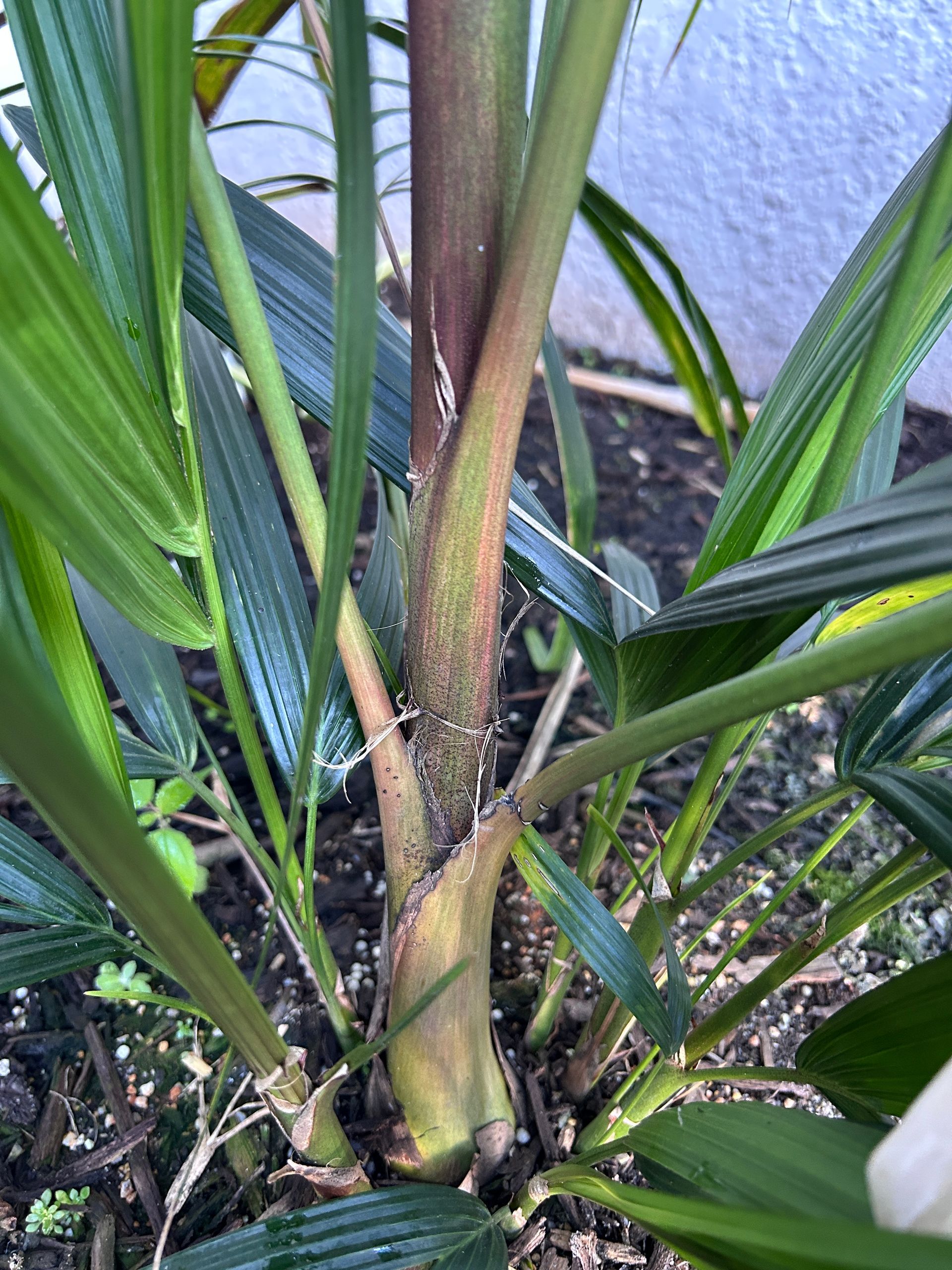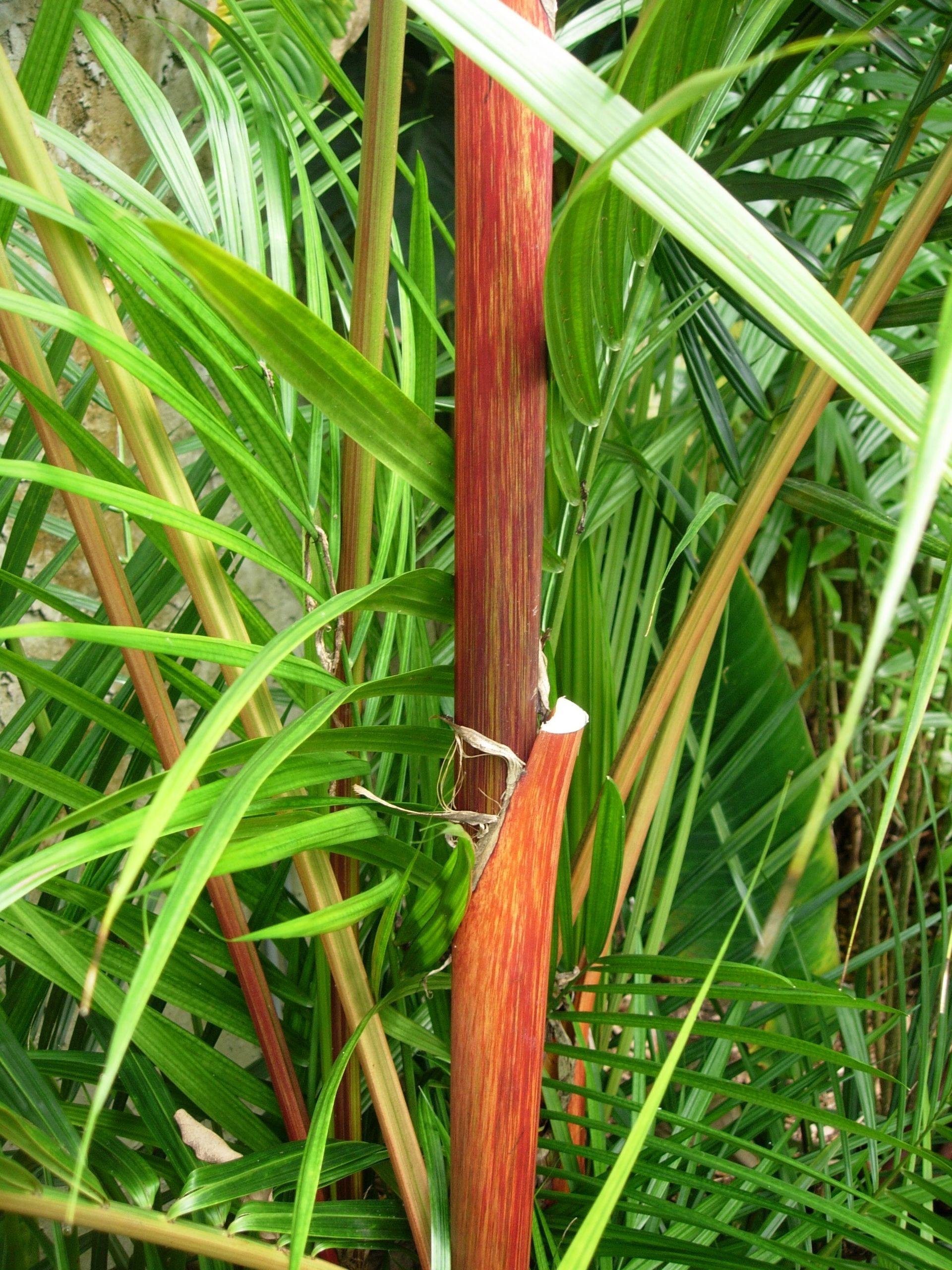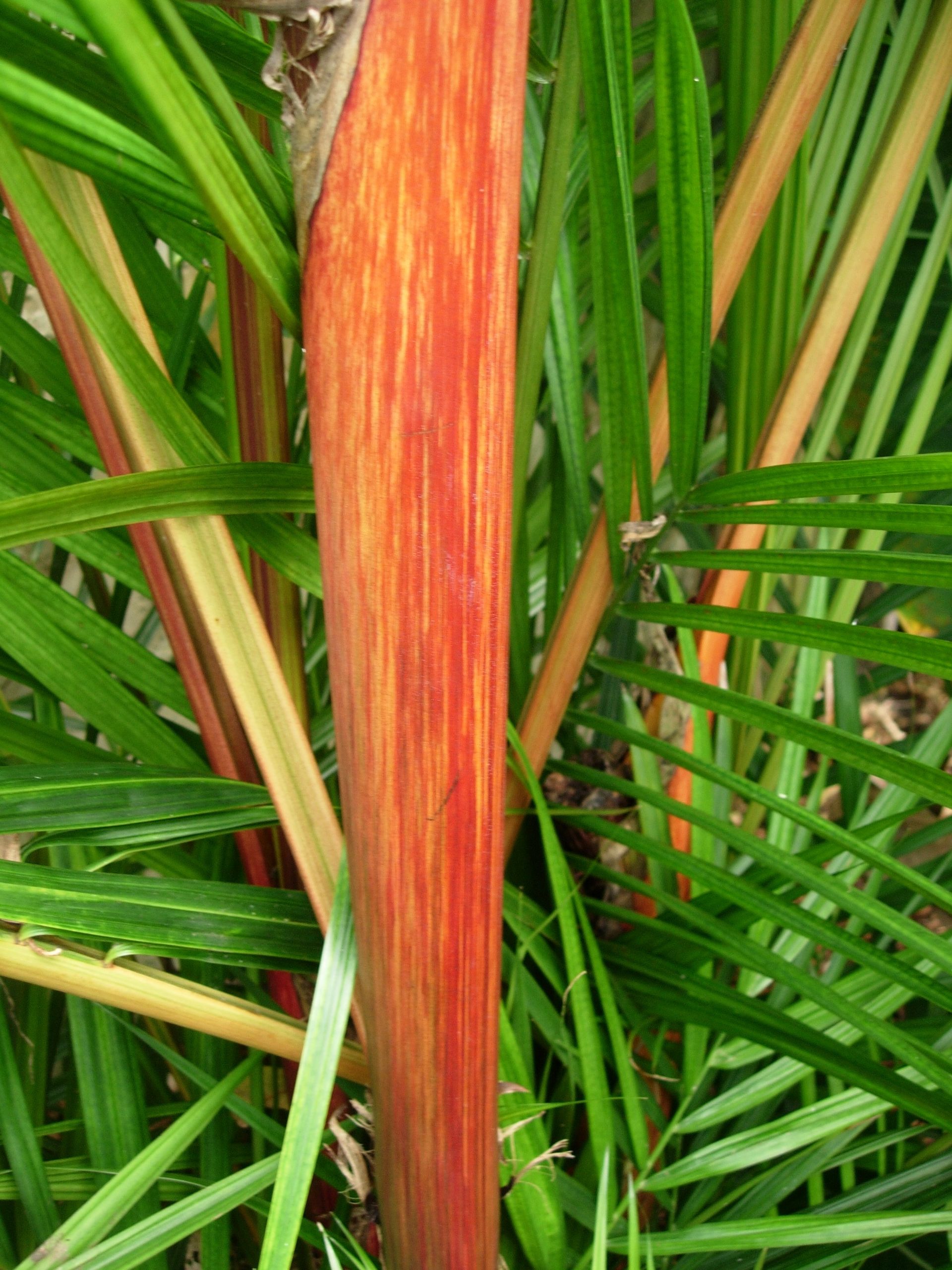Cyrtostachys renda 'Red Form' x 'Yellow Form' (proportedly)
Common Name: Cyrtostachys renda 'Red Form' x 'Yellow Form' (proportedly)
Sun: Full sun from a young age
Growth Rate: Slow (a bit faster than pure Lipstick Palms)
Fertilizer: Low
Water: Tons. Will grow with some or all of its root ball submerged in water.
Cold Tolerance: Zone 11 (can be grown in 10b if protected from windchill or brought in if temps fall below 50deg F when young and 45deg F once mature)
History: Ohhhh, where to begin.... We first saw a Cyrtostachys renda 'Theodora Buhler' (see picture) in the glass house at Fairchild Tropical Botanical Garden in Coral Gables, FL in 2005. It was magnificent! It's red and orange streaked crownshafts are so striking, they almost don't look real. Even the stems have some vertical striping on them. The original plant was reportedly a single specimen outside a Buddhist temple in Vietnam or Cambodia. A palm collector visiting the area collected seed from the tree and sent it to the states where Theodora 'Teddy' Buhler planted one in the back yard and donated one to Fairchild. An article was written about it in the Journal of the International Palm society. There is also an 'Apple' form that is in a few Australian and Hawaiian gardens, as well as at Nong Nooch. We surmise that this 'Apple' version is one in the same with 'Theodora Buhler' as both have very similar crownshaft color and variegation, very similar growth speed (slightly faster than a pure Lipstick Palm), similar cold tolerance, and lastly thin leaflets that are more widely spaced along the rachis than that of pure Cyrtostachys renda. As such. this cultivar is likely not a cultivar at all! But a hybrid. Since there are Red, Yellow, and Orange cultivars of the Lipstick Palm, this is likely a hybrid of the Red form with the Yellow form (both of which are found in flowering-size in Singapore and Thailand gardens).
Production: The plant is only propagated vegetatively as we are not aware of any seed being dispersed.
Benefits: Slightly faster growing and more cold tolerant than pure C. renda. Leaflets tend to be very dark green. More diversly colorful crownshaft than pure C. renda.
Identification: Streaked crownshaft and trunk. Thin leaflets that are widely spaced. Very wide leaf base scars once trunking.








